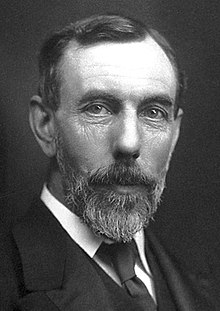Xenon
![]()
The title of this article is ambiguous. For other meanings, see Xenon (disambiguation).
Xenon ( ![]() ) is a chemical element with the element symbol Xe and the atomic number 54. In the periodic table it is in the 8th main group, or the 18th IUPAC group and therefore belongs to the noble gases. Like the other noble gases, it is a colorless, extremely inert, monatomic gas. In many properties, such as melting and boiling point or density, it stands between the lighter krypton and the heavier radon.
) is a chemical element with the element symbol Xe and the atomic number 54. In the periodic table it is in the 8th main group, or the 18th IUPAC group and therefore belongs to the noble gases. Like the other noble gases, it is a colorless, extremely inert, monatomic gas. In many properties, such as melting and boiling point or density, it stands between the lighter krypton and the heavier radon.
Xenon is the rarest non-radioactive element on earth and occurs in small quantities in the atmosphere. Despite its rarity, it is widely used, for example as a filling gas of high-quality insulating glass units, as well as xenon gas discharge lamps, which are used in car headlights (xenon light), among other things, and as an inhalation anesthetic.
The noble gas was discovered in 1898 by William Ramsay and Morris William Travers by fractional distillation of liquid air. Xenon is the noble gas with the most known chemical compounds. The most stable of these is xenon(II) fluoride, which is used as a strong oxidizing and fluorinating agent.
History
After John William Strutt, 3rd Baron Rayleigh, and William Ramsay had discovered the first noble gas argon in 1894 and Ramsay had isolated helium from uranium ores in 1895, which had previously only been known from the solar spectrum, the latter realised from the laws of the periodic system that there must be other such elements. Therefore, starting in 1896, he first investigated various minerals and meteorites and the gases they emitted when heated or dissolved. However, Ramsay and his colleague Morris William Travers were unsuccessful. Helium and, more rarely, argon were found. Also the investigation of hot gases from Cauterets in France and from Iceland brought no results.
Finally, they began to examine 15 liters of crude argon and separate it by liquefaction and fractional distillation. When they examined the residue that remained when the crude argon was almost completely vaporized, they discovered the new element krypton. After discovering neon, Ramsay and Travers began to investigate krypton further by fractional distillation in September 1898 and discovered another element with a higher boiling point than krypton. They named it xenon after the ancient Greek ξένος xénos "foreign".
In 1939 Albert R. Behnke discovered the anaesthetic effect of the gas. He investigated the effect of various gases and gas mixtures on divers and assumed from the results that xenon must have an anaesthetic effect even at normal pressure. However, he was unable to verify this due to a lack of gas. This effect was first confirmed in 1946 by J. H. Lawrence on mice, and the first operation under xenon anaesthesia was performed by Stuart C. Cullen in 1951.
Neil Bartlett discovered xenon hexafluoroplatinate in 1962, the first xenon compound and thus the first noble gas compound ever. Only a few months after this discovery, xenon(II) fluoride was synthesized almost simultaneously in August 1962 by Rudolf Hoppe and xenon(IV) fluoride by a group led by the American chemists C. L. Chernick and H. H. Claassen.

Sir William Ramsay
Mining
Xenon is recovered exclusively from air by the Linde process. During nitrogen-oxygen separation, it accumulates together with krypton in the liquid oxygen, which is located in the sump of the column, due to its high density. This mixture is transferred to a column where it is enriched to about 0.3% krypton and xenon. To this end, the liquid krypton xenon concentrate contains oxygen as well as larger amounts of hydrocarbons such as methane, fluorinated compounds such as sulfur hexafluoride or tetrafluoromethane, and traces of carbon dioxide and dinitrogen monoxide. Methane and dinitrogen monoxide can be converted via combustion on platinum or palladium catalysts at 500 °C to carbon dioxide, water and nitrogen, which can be removed by adsorption on molecular sieves. Fluorine compounds, on the other hand, cannot be removed from the mixture in this way. To break them down and remove them from the mixture, the gas can be irradiated with microwaves, in which case the element-fluorine bonds can be broken and the fluorine atoms formed can be captured in soda lime or passed over a titanium dioxide-zirconium dioxide catalyst at 750 °C. The fluorine compounds react to form carbon dioxide, water and nitrogen. In the process, the fluorine compounds react to form carbon dioxide and hydrogen fluoride and other separable compounds.
Krypton and xenon are then separated in another column, which is heated at the bottom and cooled at the top. While the krypton and oxygen residues escape at the top of the column, xenon collects at the bottom and can be skimmed off. Due to its rarity coupled with high demand, xenon is the most expensive noble gas. The total production volume in 2017 was 12,200 m3, which corresponds to about 71.5 tonnes.
Search within the encyclopedia